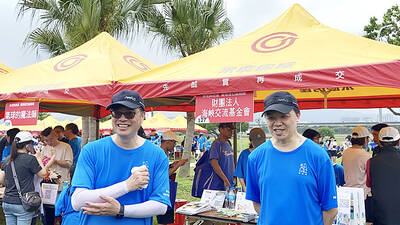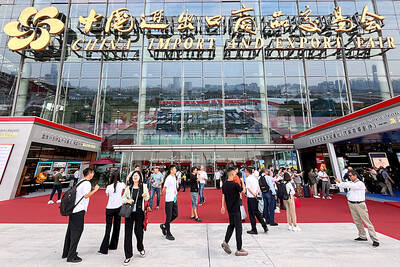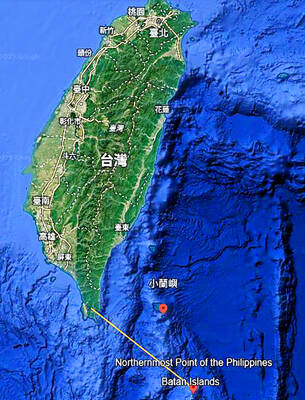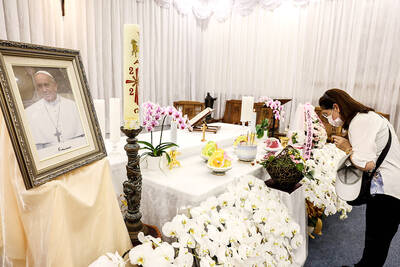Industry giants such as Apple, Dell and HP can turn a notebook launch into a global event, but that’s not the sort of thing a Taiwanese company would normally attempt. Taiwan does cheap, not chic. But having what looked like a hot product in the S101 netbook, Asus decided to have a go, and paid to bring the world’s tech press to a fashion show in Taipei.
The event was somewhat short of chic. And as you’d expect from a first attempt, Asus had a lot to learn about herding recalcitrant journalists.
The potential benefits to Asus of pulling off this kind of event are enormous. It is turning itself from a motherboard supplier and contract manufacturer-making portable PCs for other companies — into a tier-one supplier with a global brand name. If it can do that, customers will pay more for its products.
The S101 is a case in point. Asus is becoming known to European consumers following the success of its netbooks, starting with the little Eee PC700 — but what caught the eye was its price, £200 in the UK and around US$320 in the US. With the Eee S101 — £449 (US$777) in the UK — what catches the eye is that it’s really thin and, as another journalist said, “gorgeous.” It could have been made by, or for, Apple or Sony. It didn’t look out of place in a fashion show. Functionally, the S101 is just an Eee PC 1000 at a higher price. But you might be willing pay extra for something you’d be proud to carry.
That message was spelled out by Stan Shih (施振榮), the founder of Acer and father of the Taiwanese computer industry. At a business seminar in Taipei, reported by Elizabeth Tchii in the Taipei Times, he said the future was in branding, no matter how difficult it was to achieve.
“The days of doing OEM and ODM [making boxes and designs for others to put their own brand name on] are numbered,” he said. “In order to elevate Taiwan to the global business scene with added value, we have to invest in branding right now. This is our social responsibility.”
It’s a path Acer has taken, under the Italian management of Gianfranco Lanci, partly by buying known US brands such as Gateway and Packard Bell. It’s a path China’s Legend, now called Lenovo, has taken by buying IBM’s PC division. But Asus is trying to do it by transforming the company.
‘SMALL BUT BEAUTIFUL’
Jonney Shih (施崇棠), who started Asus in 1989 after a dozen years at Acer, says Asus was intended to be “a small but beautiful company” based on its engineering prowess. It became known for technical innovation in motherboards, but he says the company also tried to make them look beautiful. In 1997, the company went from motherboards into notebooks as an OEM and ODM supplier, then launched products under its own brand name.
Jonney Shih said the company was named Asus after an engineer suggested Pegasus. He truncated it because he wanted a name that started with an A. They’ve now spun off the OEM and ODM businesses into a separate company called Pegatron, thus using the spare half of the flying horse’s name. Pegatron’s offices are visible from Asus’ doorstep, but the split means Asus isn’t competing directly against its own customers.
Again, Asus is following Acer, which split off its OEM business into Wistron on the way to becoming a global brand name. By contrast, the two giants of Taiwan’s OEM business, Quanta and Compal, who manufacture notebooks for Apple, Dell, HP and Lenovo, remain almost unknown. But the fear is that OEM contracts could be moved to companies in China, Vietnam and emerging countries which, HTC’s founder Peter Chou (周永明) says, are catching up fast.
INNOVATING
Of course, brand building doesn’t mean much unless you also have distinctive products, and this isn’t easy in the PC business. So Asus is trying to innovate. It is, for example, making power-saving “green” motherboards with low emissions and fewer hazardous chemicals than regulations require. It is challenging the competition with its Super Hybrid Engine and power-saving technologies. It is experimenting with designs such as the Eee PC and the tiny Eee Box, a desktop PC that will soon have a battery-powered version.
In software, Asus provides the Eee Box and S101 with a Linux-based pre-boot system that enables users to get online and do e-mail without waiting for Windows. With Microsoft, it has taken part in the Vista Velocity and Hero PC programs, and is optimizing XP for the fastest possible startup times.
Asus is also innovating by using natural materials for notebook finishes. It tried leather three or four years ago, and designer Michelle Hsiao says it is now working with wood, a process that will culminate in the release of a bamboo notebook.
The shift upmarket includes a drive for quality. As Jonathan Tsang (曾鏘聲), president of sales and marketing, puts it: “Volume is not everything. Quality is everything. We’re trying to make ourselves the most admired enterprise in the digital era.”
That’s Asus’ new vision.
He says: “Do you want to be Porsche or Hyundai?”
It goes along with a corporate philosophy that demands Humility and Integrity (“Do not cheat!”). Which is a refreshing change from: “Don’t get caught!”
Of course, success requires more than quality products, and stepping up marketing and press relations is part of the job. Hauling in jet-lagged journalists from India, Russia, Italy and other countries is just a start.
Asus says it will sell more than 6 million notebooks this year and 5 million netbooks, with a group turnover of more than US$20 billion. The Asus name could soon mean much more than “Big in Taiwan.”

SECURITY: As China is ‘reshaping’ Hong Kong’s population, Taiwan must raise the eligibility threshold for applications from Hong Kongers, Chiu Chui-cheng said When Hong Kong and Macau citizens apply for residency in Taiwan, it would be under a new category that includes a “national security observation period,” Mainland Affairs Council (MAC) Minister Chiu Chui-cheng (邱垂正) said yesterday. President William Lai (賴清德) on March 13 announced 17 strategies to counter China’s aggression toward Taiwan, including incorporating national security considerations into the review process for residency applications from Hong Kong and Macau citizens. The situation in Hong Kong is constantly changing, Chiu said to media yesterday on the sidelines of the Taipei Technology Run hosted by the Taipei Neihu Technology Park Development Association. With

CARROT AND STICK: While unrelenting in its military threats, China attracted nearly 40,000 Taiwanese to over 400 business events last year Nearly 40,000 Taiwanese last year joined industry events in China, such as conferences and trade fairs, supported by the Chinese government, a study showed yesterday, as Beijing ramps up a charm offensive toward Taipei alongside military pressure. China has long taken a carrot-and-stick approach to Taiwan, threatening it with the prospect of military action while reaching out to those it believes are amenable to Beijing’s point of view. Taiwanese security officials are wary of what they see as Beijing’s influence campaigns to sway public opinion after Taipei and Beijing gradually resumed travel links halted by the COVID-19 pandemic, but the scale of

A US Marine Corps regiment equipped with Naval Strike Missiles (NSM) is set to participate in the upcoming Balikatan 25 exercise in the Luzon Strait, marking the system’s first-ever deployment in the Philippines. US and Philippine officials have separately confirmed that the Navy Marine Expeditionary Ship Interdiction System (NMESIS) — the mobile launch platform for the Naval Strike Missile — would take part in the joint exercise. The missiles are being deployed to “a strategic first island chain chokepoint” in the waters between Taiwan proper and the Philippines, US-based Naval News reported. “The Luzon Strait and Bashi Channel represent a critical access

Pope Francis is be laid to rest on Saturday after lying in state for three days in St Peter’s Basilica, where the faithful are expected to flock to pay their respects to history’s first Latin American pontiff. The cardinals met yesterday in the Vatican’s synod hall to chart the next steps before a conclave begins to choose Francis’ successor, as condolences poured in from around the world. According to current norms, the conclave must begin between May 5 and 10. The cardinals set the funeral for Saturday at 10am in St Peter’s Square, to be celebrated by the dean of the College